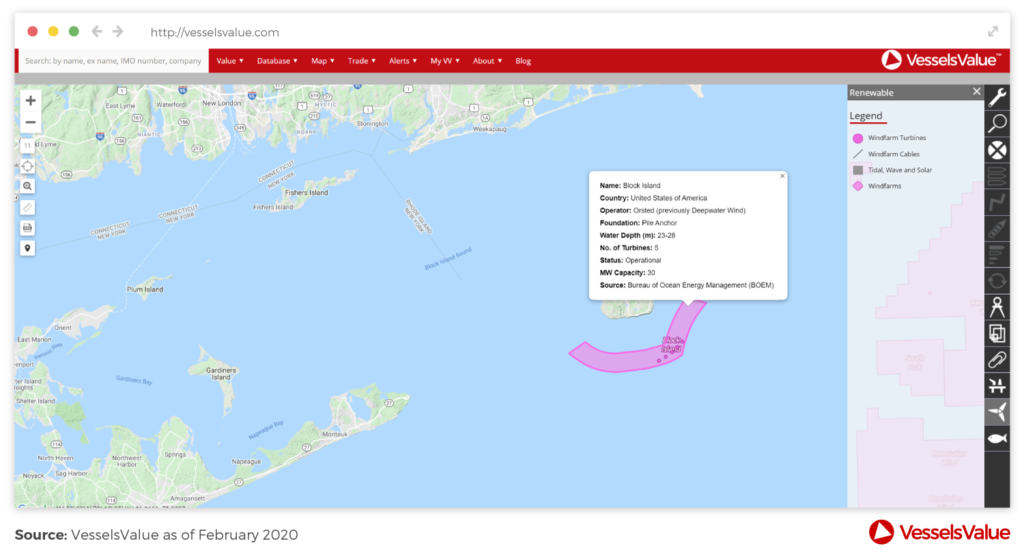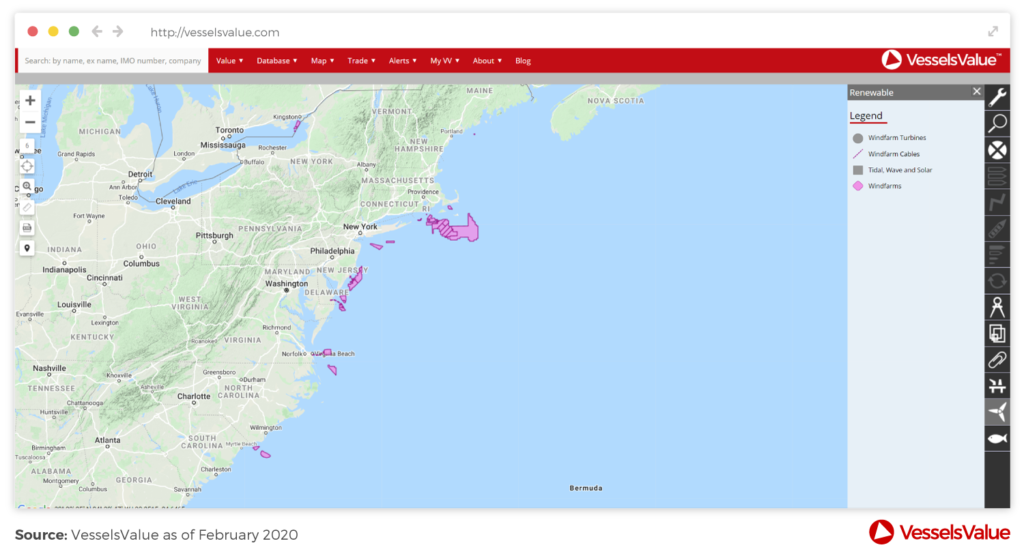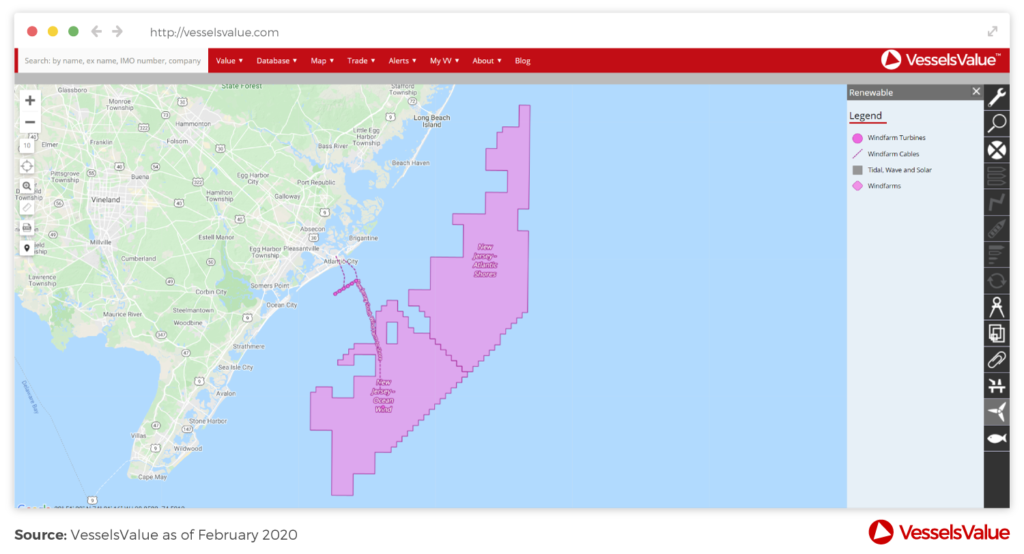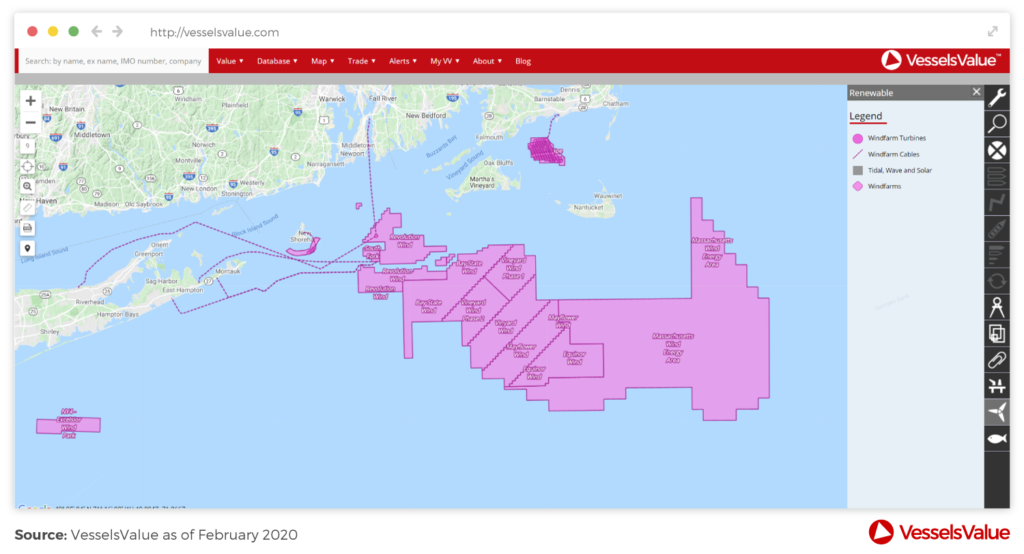Offshore Wind trends in the US
At present the United States has only one operational offshore wind farm, Block Island Wind, located offshore of the State of Rhode Island. The wind farm, operated by Orsted, consists of five turbines producing 30MW (megawatts) for the 1000 island residents of New Shoreham.
However, new state policies all along the Eastern Seaboard, from Maine in the north to North Carolina in the south; along with a reduction in costs of offshore wind in recent years means a massive increase in the number of US offshore wind projects in the coming years.

The Department of Energy predicts that offshore wind in US waters has the potential to annually generate in excess of 2000GW (gigawatts), potentially twice the present national annual electricity demand.
There are 20 development leases for offshore wind locations currently in the US, mostly along the Eastern Seaboard, with a potential capacity of 23-25GW. Other proposed sites are located on the Great Lakes and off the coast of California.

Major upcoming US projects include Coastal Virginia Offshore Wind (CVOW) proposed for completion 2026 by Dominion Energy. This project would be the largest US offshore wind farm to date at a capacity of 2.64GW produced by 220 turbines.
The second largest proposed offshore wind farm is Orsted’s Ocean Wind project off the coast of New Jersey at Atlantic City. Ocean Wind should be constructed by 2024 and have a capacity of 1.1GW produced by 90 turbines.

According to the Department of Energy up to 22GW of installed wind farms is possible by 2030 rising to 86GW by 2050, especially as offshore wind power costs drop considerably due to increases in turbine technology.
With the introduction of the newer breed of 10-12MW wind turbines a cost of below $100 per MWh (megawatt-hour) could be seen by 2030. Other major offshore proposed projects in the US include Sunrise Wind (capacity of 880MW), Empire Wind (816MW), Vineyard Wind (800MW) and Revolution Wind (700MW), all off the east coast.

Disclaimer: The purpose of this blog is to provide general information and not to provide advice or guidance in relation to particular circumstances. Readers should not make decisions in reliance on any statement or opinion contained in this blog.
Want to know more about how our
data can help you assess the market?


Comments
1 Comment
Great content! Super high-quality! Keep it up! 🙂
Leave a Comment